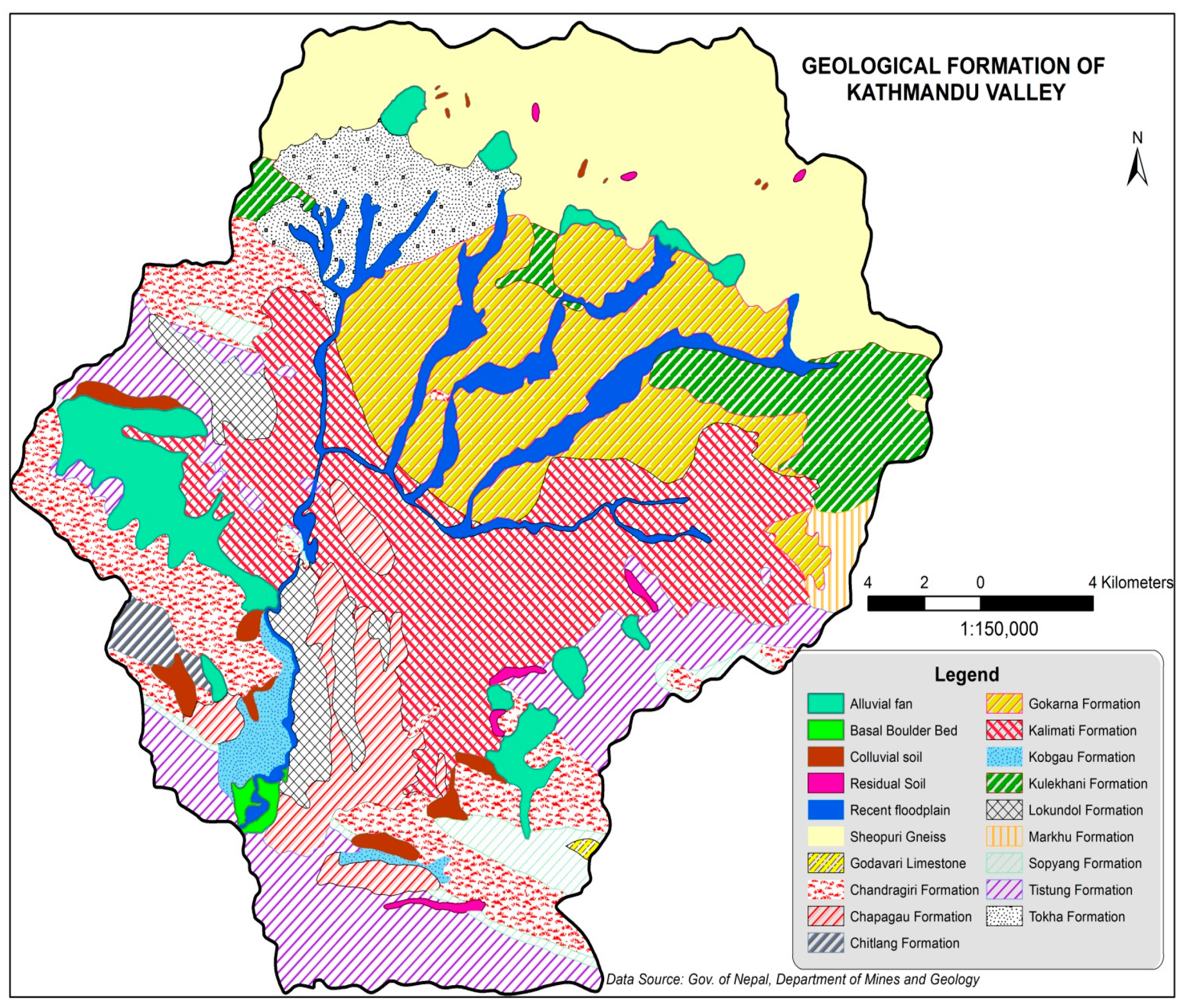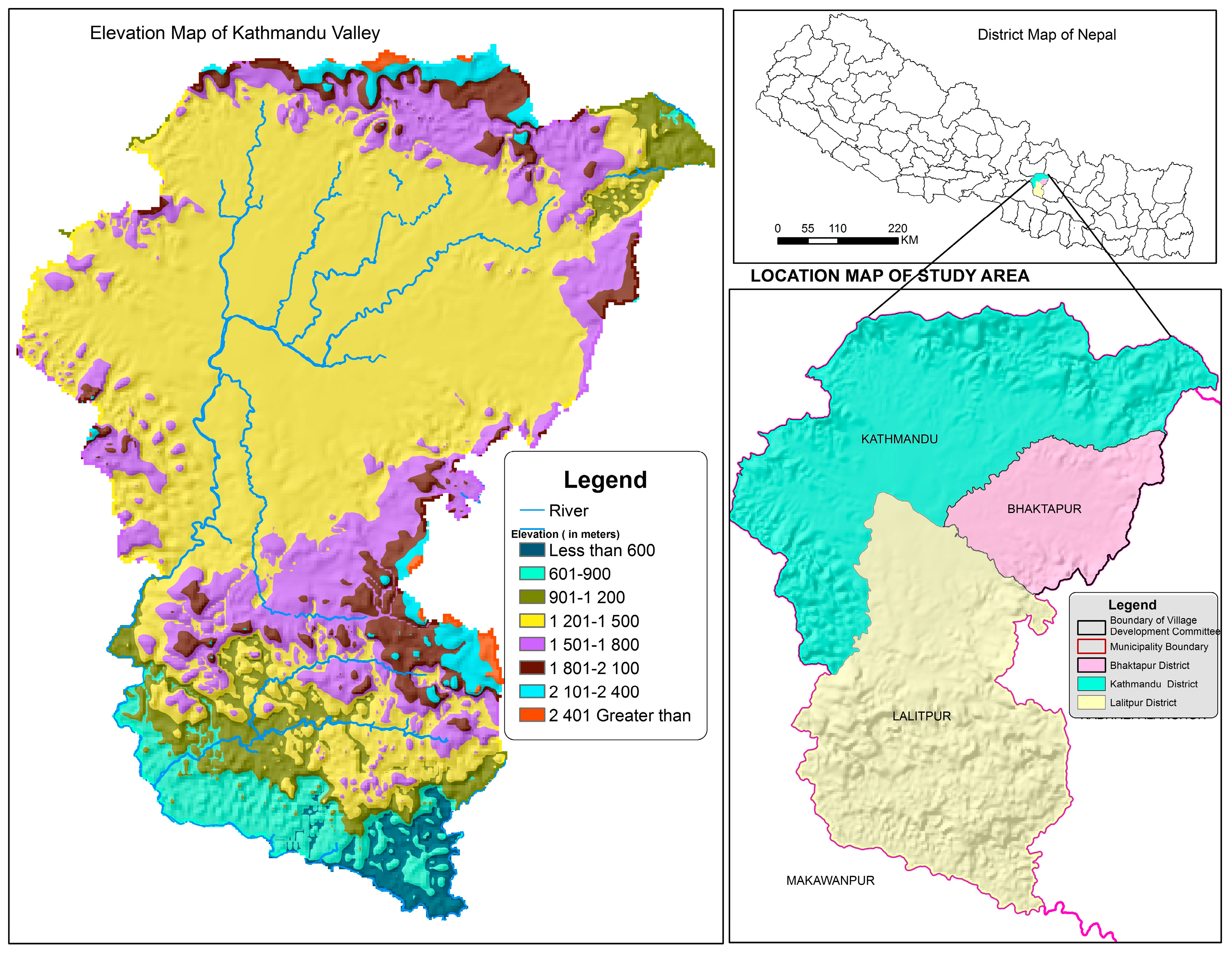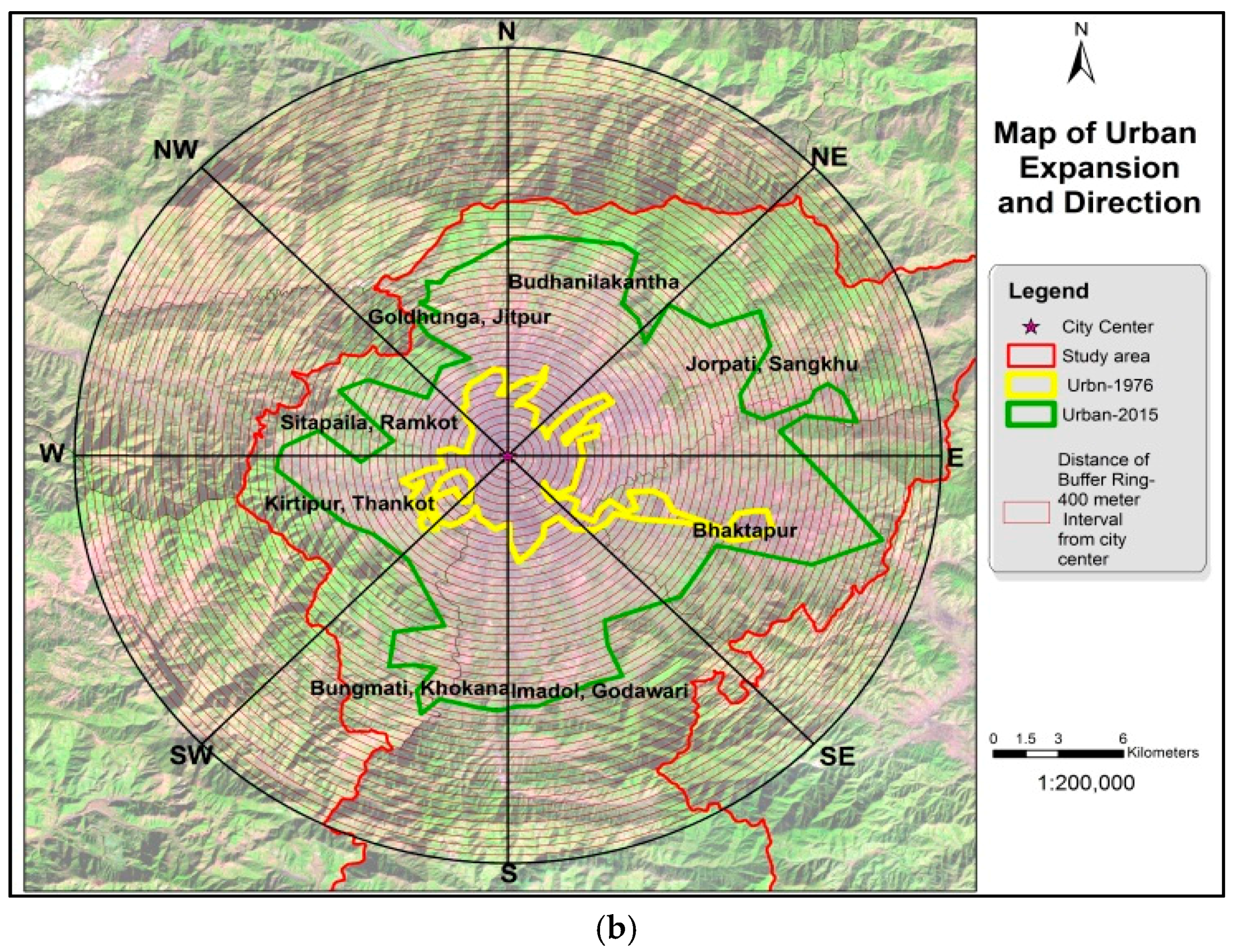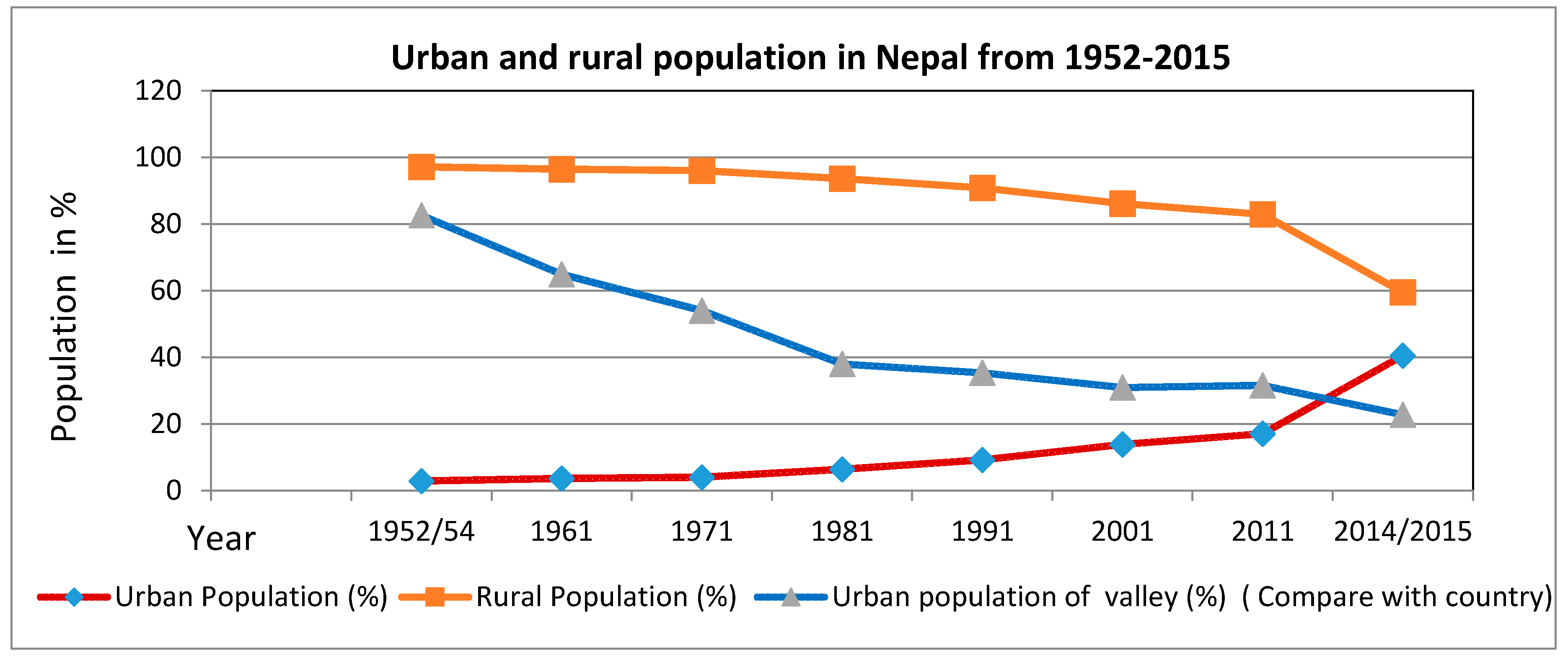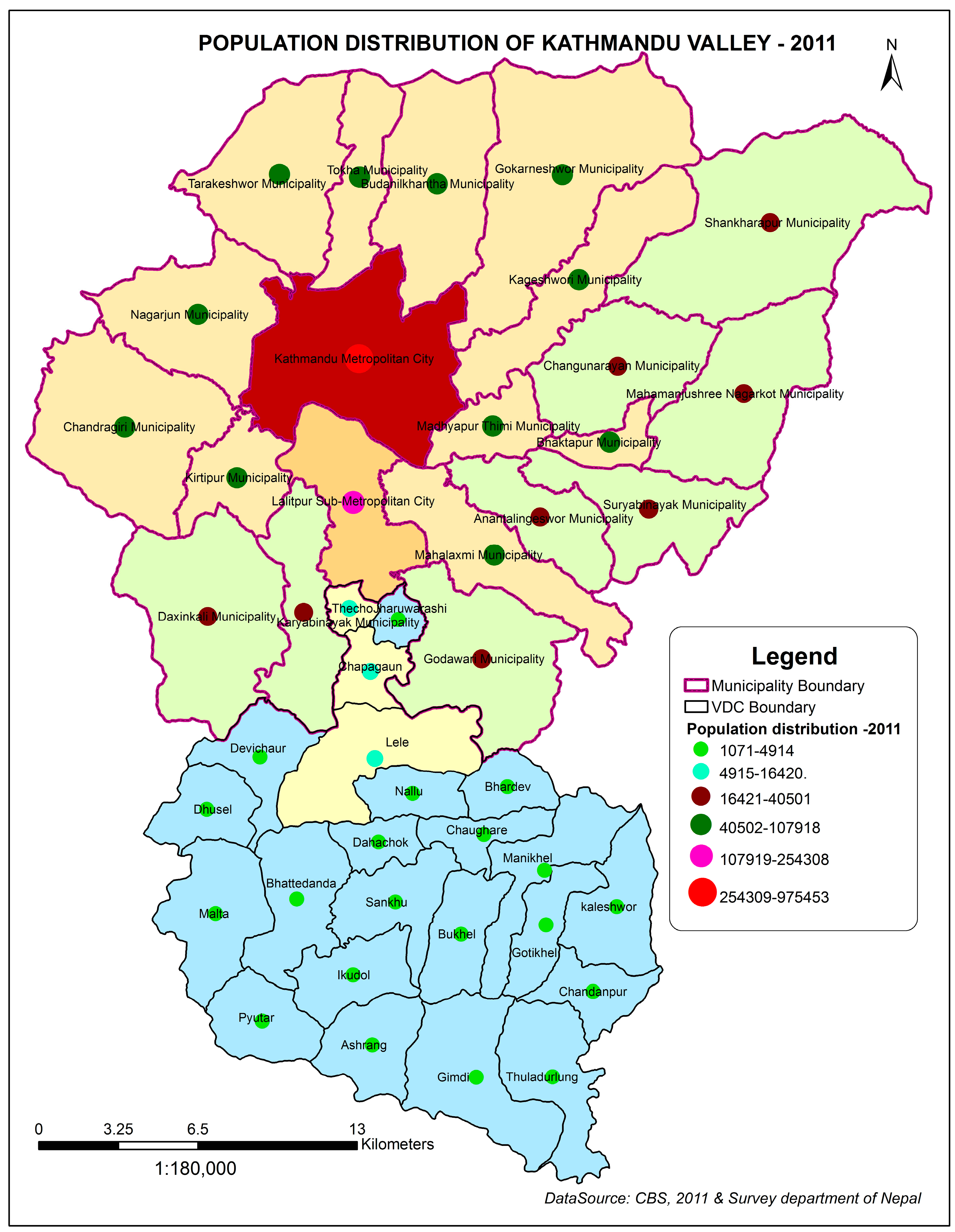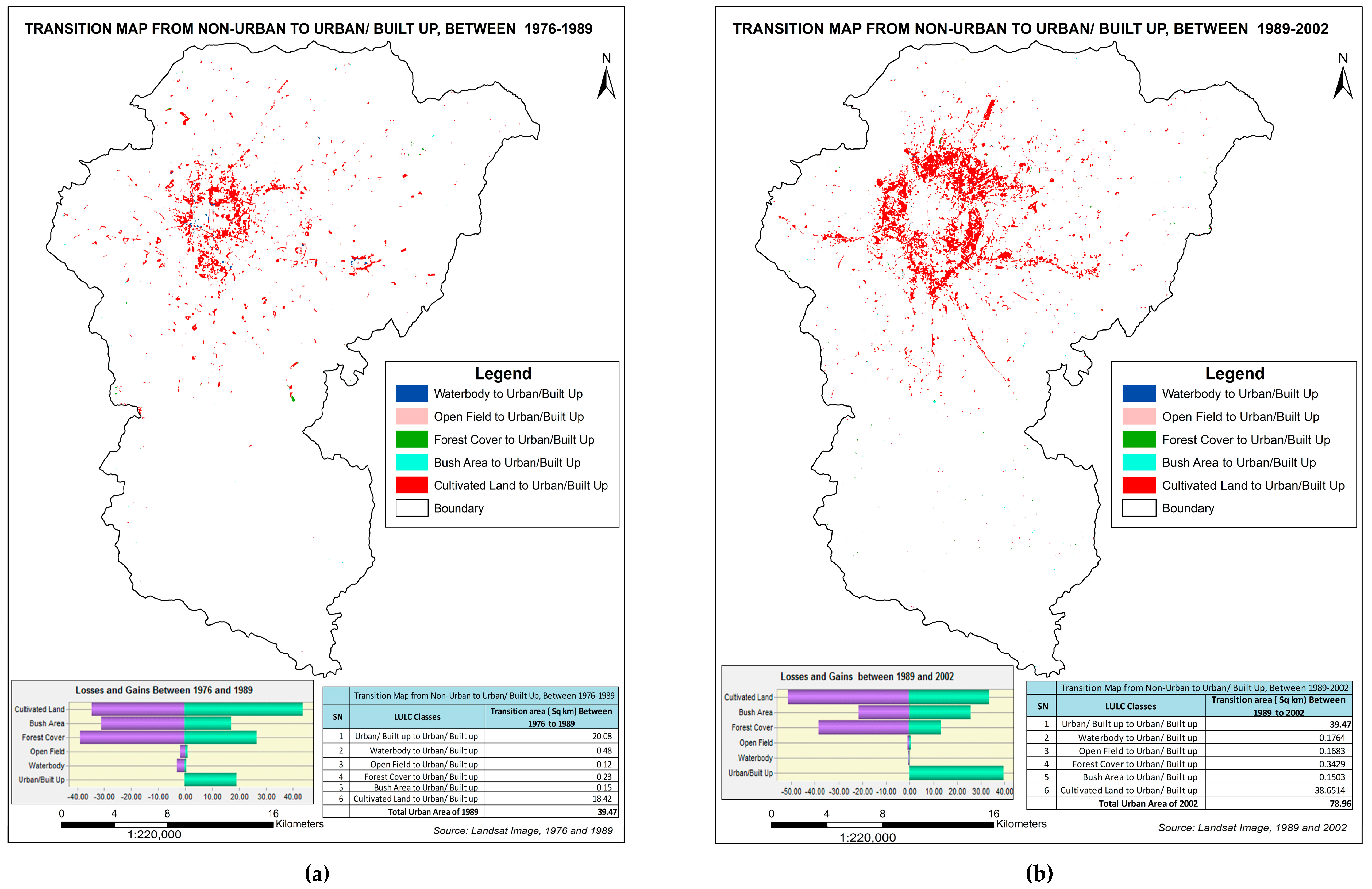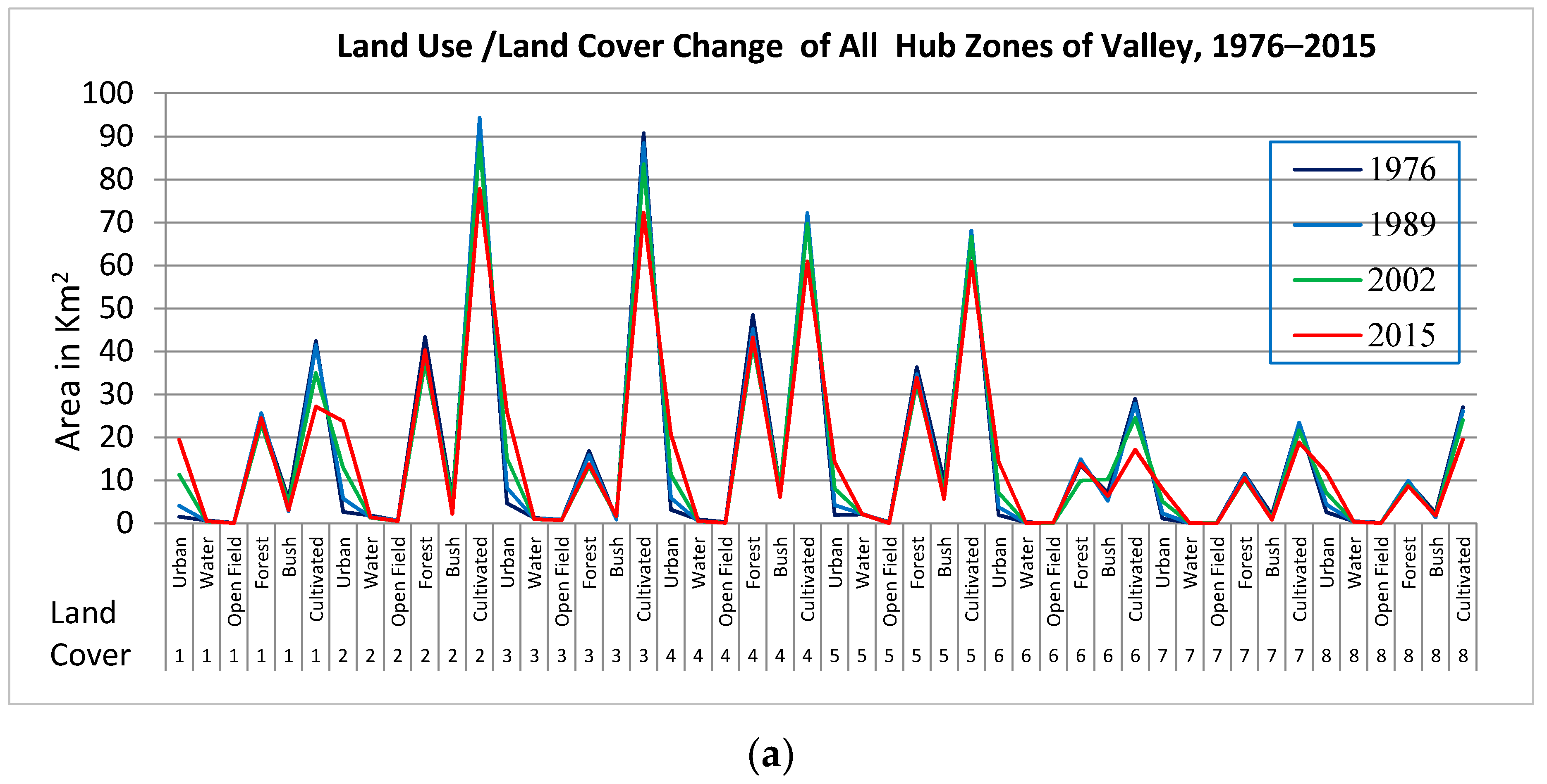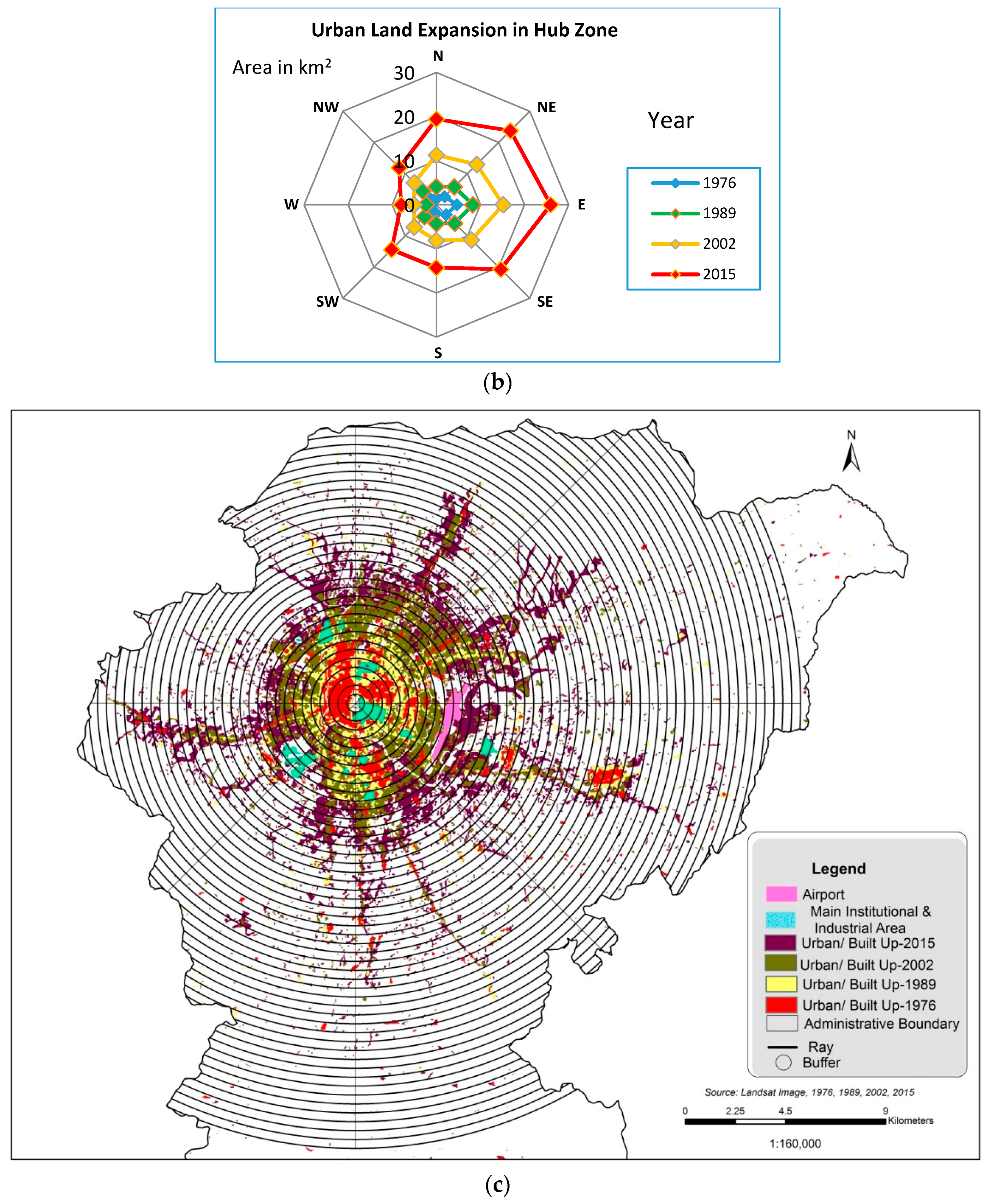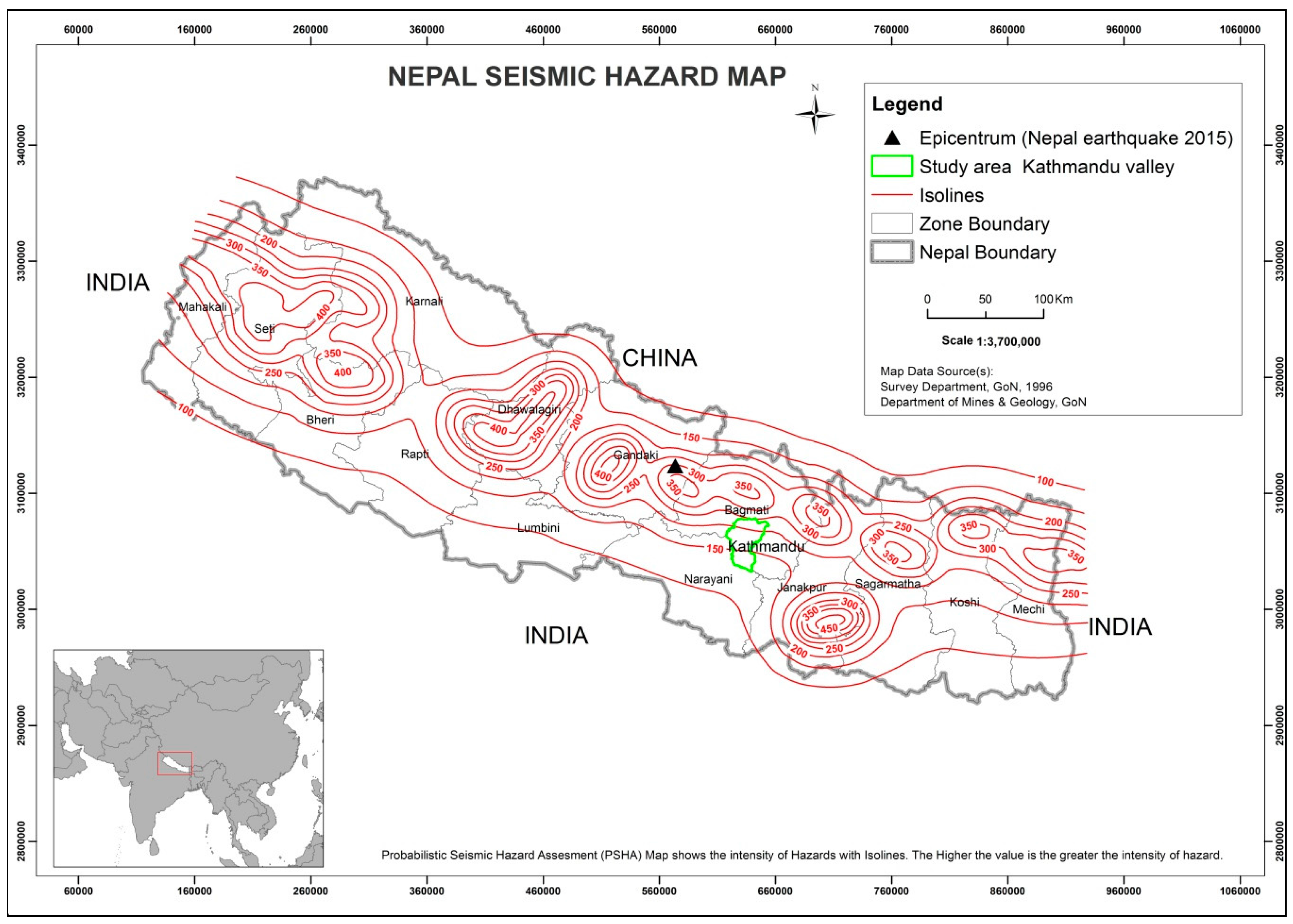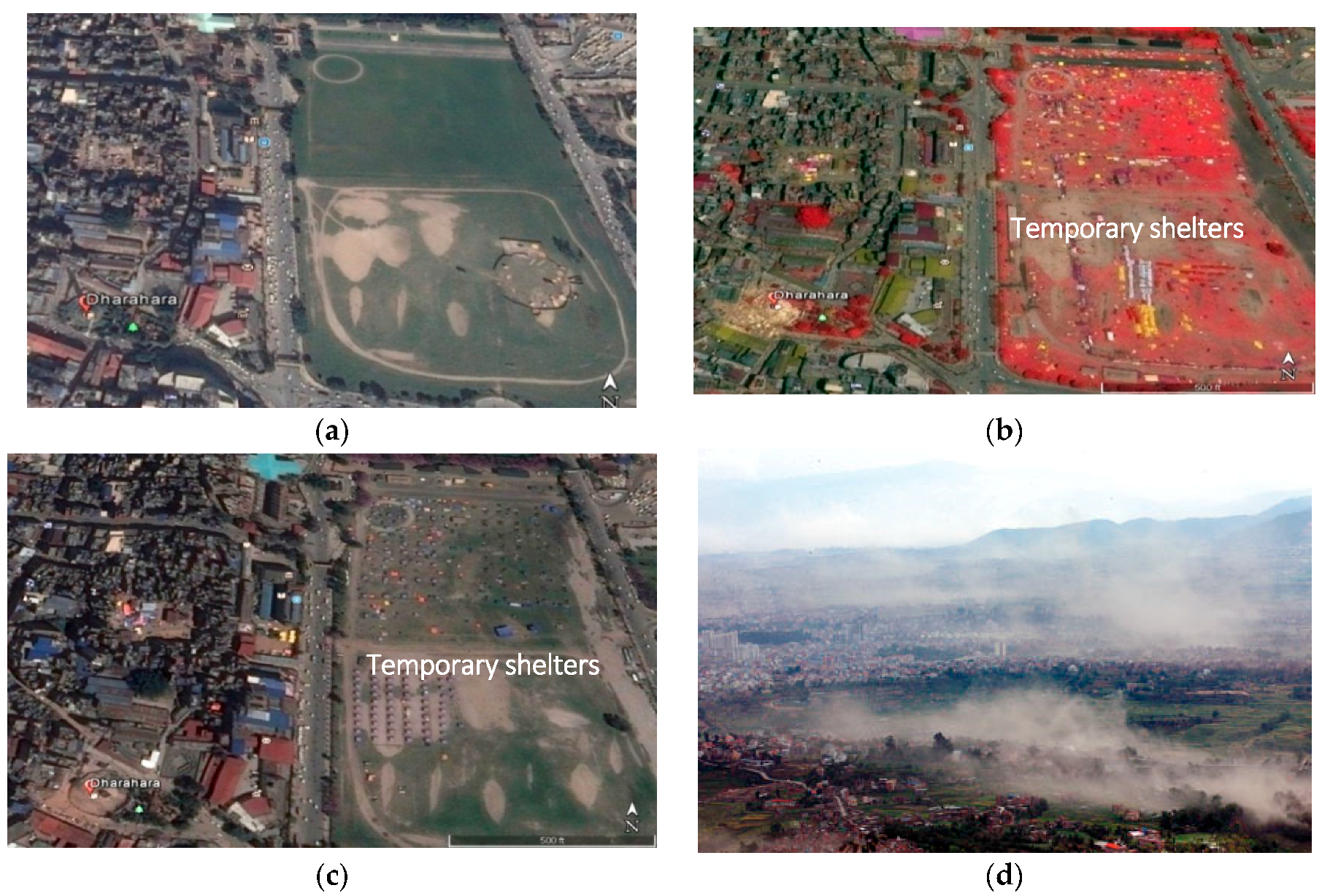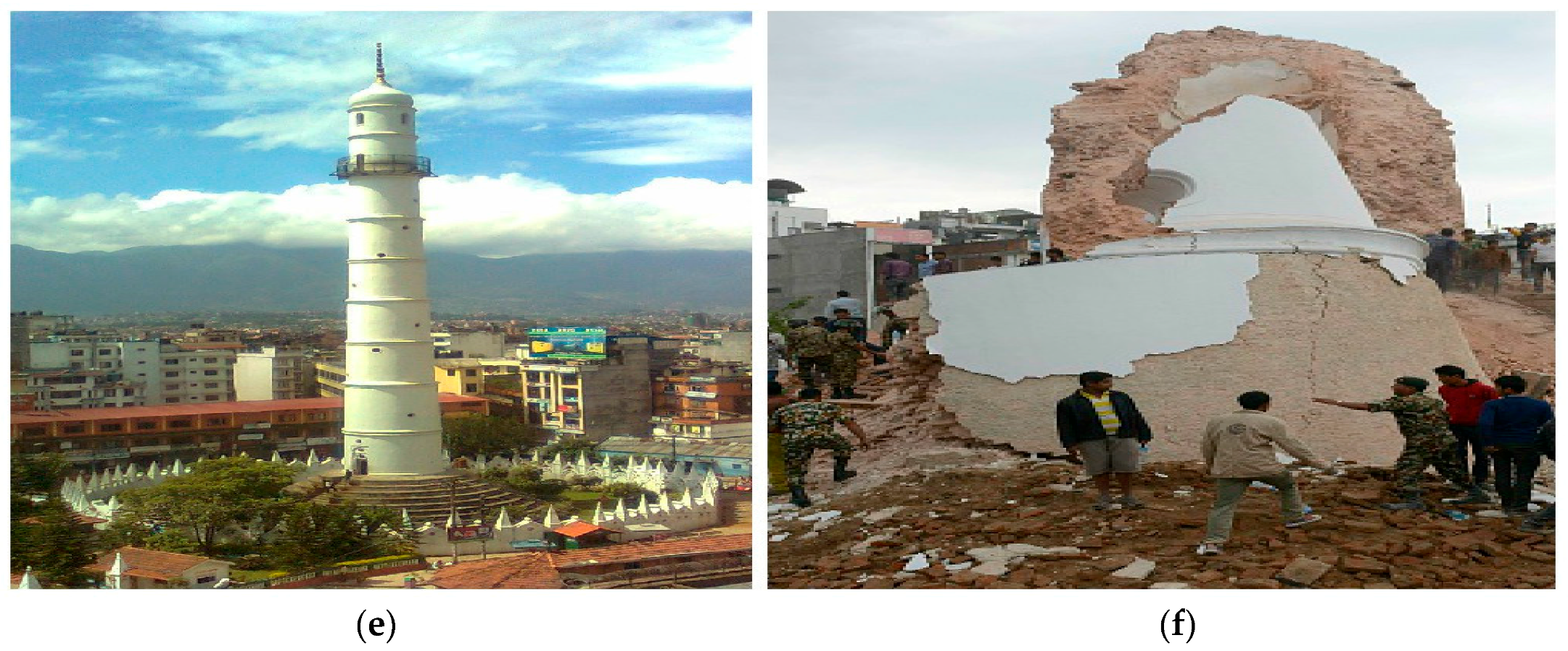Figure 1.
Geological formation map of Kathmandu valley.
Figure 1.
Geological formation map of Kathmandu valley.
Figure 2.
(a) Location map of the study area; (b) urban expansion of Kathmandu valley in eight main area.
Figure 2.
(a) Location map of the study area; (b) urban expansion of Kathmandu valley in eight main area.
Figure 3.
Methodological approach.
Figure 3.
Methodological approach.
Figure 4.
Urban and rural population of Nepal.
Figure 4.
Urban and rural population of Nepal.
Figure 5.
Population distribution in different parts of the Kathmandu valley. Note: The administrative boundary of Village Development Committees, Municipalities and their nomenclature are being changed due to the reconstruction and reclassification of the local-level administrative units, although this study is based on local development construction before March 2017.
Figure 5.
Population distribution in different parts of the Kathmandu valley. Note: The administrative boundary of Village Development Committees, Municipalities and their nomenclature are being changed due to the reconstruction and reclassification of the local-level administrative units, although this study is based on local development construction before March 2017.
Figure 6.
Trend of land use change in Kathmandu valley.
Figure 6.
Trend of land use change in Kathmandu valley.
Figure 7.
LULC map of Kathmandu valley: (a) 1976; (b) 1989; (c) 2002; and (d) 2015.
Figure 7.
LULC map of Kathmandu valley: (a) 1976; (b) 1989; (c) 2002; and (d) 2015.
Figure 8.
(a) Transition map from all land use/land cover classes to urban area 1976–1989; (b) transition map from all land use/land cover classes to urban area 1989–2002; (c) transition map from all land use/land cover classes to urban area 2002–2015; (d) urban land cover dynamics of the valley from 1976–2015.
Figure 8.
(a) Transition map from all land use/land cover classes to urban area 1976–1989; (b) transition map from all land use/land cover classes to urban area 1989–2002; (c) transition map from all land use/land cover classes to urban area 2002–2015; (d) urban land cover dynamics of the valley from 1976–2015.
Figure 9.
(a) Land cover change matric in all eight main zones in the valley, 1976–2015 (km2); (b) spider diagram of the urban expansion in eight directions in the valley, 1976–2015 (km2); (c) spatial orientation of urban land expansion in the valley, 1976–2015 (km2).
Figure 9.
(a) Land cover change matric in all eight main zones in the valley, 1976–2015 (km2); (b) spider diagram of the urban expansion in eight directions in the valley, 1976–2015 (km2); (c) spatial orientation of urban land expansion in the valley, 1976–2015 (km2).
Figure 10.
Seismic hazard map of Nepal.
Figure 10.
Seismic hazard map of Nepal.
Figure 11.
Google Image of Kathmandu, City (focus on Dharahara and Tudhikhel. (a) Before the earthquake, 1 December 2014; (b) after the earthquake, 26 April 2015; (c) Google Image, after the earthquake, 12 May 2015; (d) dusty sky of Kathmandu a few minutes after the quake, 2015, photo, Bikram Rai; Bhimsen Tower, Dharahara, (e) before and (f) after the earthquake: Google search: 6 June 2016.
Figure 11.
Google Image of Kathmandu, City (focus on Dharahara and Tudhikhel. (a) Before the earthquake, 1 December 2014; (b) after the earthquake, 26 April 2015; (c) Google Image, after the earthquake, 12 May 2015; (d) dusty sky of Kathmandu a few minutes after the quake, 2015, photo, Bikram Rai; Bhimsen Tower, Dharahara, (e) before and (f) after the earthquake: Google search: 6 June 2016.
Figure 12.
Overlay map of the earthquake damage structure and geological map of Kathmandu valley.
Figure 12.
Overlay map of the earthquake damage structure and geological map of Kathmandu valley.
Figure 13.
Overlay map of earthquake damage structure and administrative boundary map of Kathmandu valley (including all three district boundaries).
Figure 13.
Overlay map of earthquake damage structure and administrative boundary map of Kathmandu valley (including all three district boundaries).
Table 1.
Population distribution of Kathmandu valley.
Table 1.
Population distribution of Kathmandu valley.
| Districts | 1971 | 1981 | 1991 | 2001 | 2011 |
|---|
| Kathmandu District | 353,756 | 422,237 | 675,341 | 1,081,845 | 1,744,240 |
| Lalitpur District | 154,998 | 184,341 | 257,086 | 337,785 | 468,132 |
| Bhaktapur District | 110,157 | 159,767 | 172,952 | 225,461 | 304,651 |
| Kathmandu valley * | 620,882 | 768,326 | 1,107,370 | 1,647,092 | 2,519,034 |
Table 2.
Urban and rural population.
Table 2.
Urban and rural population.
| Year | Urban Centers | Urban Population (%) | Rural Population (%) | Urban Population of Valley (%) (of the Total Urban Population of the Country) |
|---|
| 1952/1954 | 10 | 2.9 | 97.1 | 82.6 |
| 1961 | 16 | 3.6 | 96.4 | 64.9 |
| 1971 | 16 | 4 | 96 | 54 |
| 1981 | 23 | 6.4 | 93.6 | 38 |
| 1991 | 33 | 9.2 | 90.8 | 35.3 |
| 2001 | 58 | 13.9 | 86.1 | 30.9 |
| 2011 | 58 | 17.1 | 82.9 | 31.58 |
| 2014/2015 | 217 | 40.49 | 59.51 | 22.77 |
Table 3.
Land use/land cover statistics, 1976–2015.
Table 3.
Land use/land cover statistics, 1976–2015.
| Land Cover | 1976 (Area) | 1989 (Area) | Change between 1976 and 1989 | 2002 (Area) | Change between 1989 and 2002 | 2015 (Area) | Change between 2002 and 2015 | Change between 1976 and 2015 |
|---|
| km2 | % | km2 | % | km2 | % | km2 | % |
|---|
| Urban/built up | 20.19 | 2.16 | 39.47 | 4.23 | 19.28 | 78.96 | 8.46 | 39.48 | 139.57 | 14.96 | 60.61 | 119.38 |
| Water body | 9.50 | 1.02 | 7.20 | 0.77 | −2.30 | 6.59 | 0.71 | −0.61 | 7.51 | 0.81 | 0.93 | −1.98 |
| Open field | 3.23 | 0.35 | 2.49 | 0.27 | −0.74 | 1.99 | 0.21 | −0.50 | 1.75 | 0.19 | −0.24 | −1.48 |
| Forest cover | 327.60 | 35.10 | 315.76 | 33.84 | −11.84 | 290.80 | 31.16 | −24.97 | 306.73 | 32.87 | 15.93 | −20.88 |
| Bush area | 78.94 | 8.46 | 65.33 | 7.00 | −13.61 | 69.43 | 7.44 | 4.10 | 47.22 | 5.06 | −22.22 | −31.72 |
| Cultivated land | 493.77 | 52.91 | 502.97 | 53.90 | 9.20 | 485.45 | 52.02 | −17.51 | 430.44 | 46.12 | −55.01 | −63.32 |
| Total | 933.22 | 100 | 933.22 | 100 | | 933.22 | 100 | | 933.22 | 100 | | |
Table 4.
Spatiotemporal transition of LULC, 1976–1989.
Table 4.
Spatiotemporal transition of LULC, 1976–1989.
| Year | 1989 | km2 |
| 1976 | LULC Classes | Urban | Water | Open field | Forest | Bush | Cultivated | Total |
| Urban | 20.08 | 0 | 0.00 | 0.01 | 0.01 | 0.09 | 20.19 |
| Water | 0.48 | 6.44 | 0.00 | 0.42 | 0.05 | 2.11 | 9.50 |
| Open field | 0.12 | 0.00 | 1.59 | 0.03 | 0.10 | 1.39 | 3.23 |
| Forest | 0.23 | 0.02 | 0.06 | 288.81 | 12.79 | 25.68 | 327.60 |
| Bush | 0.15 | 0.00 | 0.14 | 16.19 | 47.92 | 14.53 | 78.94 |
| Cultivated | 18.42 | 0.73 | 0.70 | 10.31 | 4.46 | 459.15 | 493.77 |
| Total | | 39.47 | 7.20 | 2.49 | 315.76 | 65.33 | 502.97 | 933.22 |
Table 5.
Spatiotemporal transition of LULC, 1989–2002.
Table 5.
Spatiotemporal transition of LULC, 1989–2002.
| Year | 2002 | km2 |
| 1989 | LULC Classes | Urban | Water | Open field | Forest | Bush | Cultivated | Total |
| Urban | 39.47 | 0.00 | 0.00 | 0.01 | 0.00 | 0.00 | 39.47 |
| Water | 0.18 | 6.54 | 0.03 | 0.02 | 0.00 | 0.43 | 7.20 |
| Open field | 0.17 | 0.00 | 1.59 | 0.02 | 0.05 | 0.66 | 2.49 |
| Forest | 0.34 | 0.01 | 0.01 | 277.27 | 20.52 | 17.62 | 315.76 |
| Bush | 0.15 | 0.00 | 0.00 | 6.35 | 43.72 | 15.10 | 65.33 |
| Cultivated | 38.65 | 0.03 | 0.37 | 7.14 | 5.14 | 451.64 | 502.97 |
| Total | | 78.96 | 6.59 | 1.99 | 290.80 | 69.43 | 485.45 | 933.22 |
Table 6.
Spatiotemporal transition of LULC, 2002–2015.
Table 6.
Spatiotemporal transition of LULC, 2002–2015.
| Year | 2015 | km2 |
| 2002 | LULC Classes | Urban | Water | Open field | Forest | Bush | Cultivated | Urban |
| Urban | 78.86 | 0.01 | 0.00 | 0.04 | 0.00 | 0.05 | 78.96 |
| Water | 0.00 | 6.56 | 0.00 | 0.03 | 0.00 | 0.00 | 6.59 |
| Open field | 0.41 | 0.02 | 1.38 | 0.01 | 0.00 | 0.18 | 1.99 |
| Forest | 0.52 | 0.13 | 0.05 | 271.64 | 4.74 | 13.72 | 290.80 |
| Bush | 0.04 | 0.01 | 0.00 | 19.14 | 38.27 | 11.96 | 69.43 |
| Cultivated | 59.74 | 0.79 | 0.32 | 15.86 | 4.20 | 404.54 | 485.45 |
| Total | | 139.57 | 7.51 | 1.75 | 306.73 | 47.22 | 430.44 | 933.22 |
Table 7.
Quantity of urban land expansion along 8 directions in the valley, 1976–2015 (km2).
Table 7.
Quantity of urban land expansion along 8 directions in the valley, 1976–2015 (km2).
| Direction | 1976 | 1989 | 2002 | 2015 |
|---|
| N to NE | 1.57 | 4.12 | 11.29 | 19.45 |
| NE to E | 2.63 | 5.76 | 12.96 | 23.75 |
| E to SE | 4.66 | 8.27 | 15.16 | 25.96 |
| SE to South | 3.16 | 5.93 | 11.28 | 20.69 |
| S to SW | 1.94 | 4.26 | 8.1 | 14.24 |
| SW to W | 1.93 | 3.78 | 7.11 | 14.35 |
| W to NW | 1.11 | 2.33 | 5.1 | 7.98 |
| NW to N | 2.58 | 4.36 | 7.07 | 11.9 |
